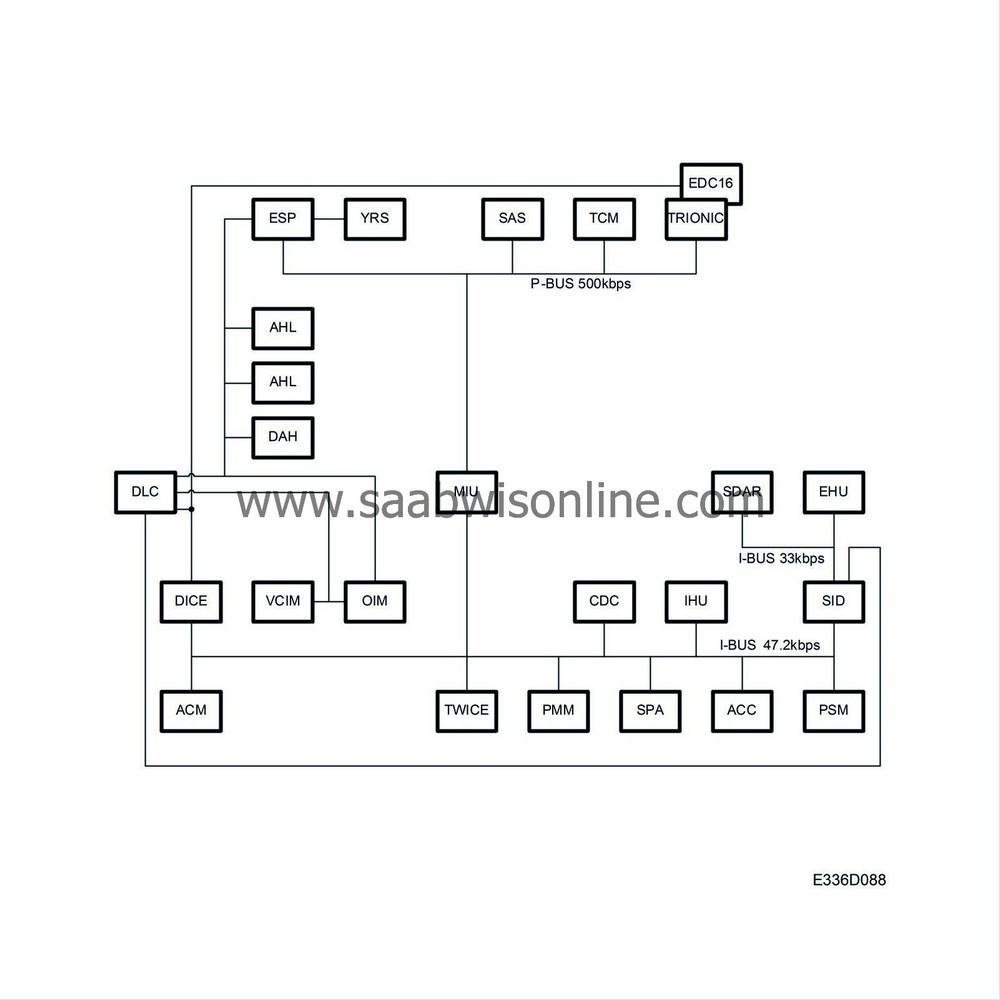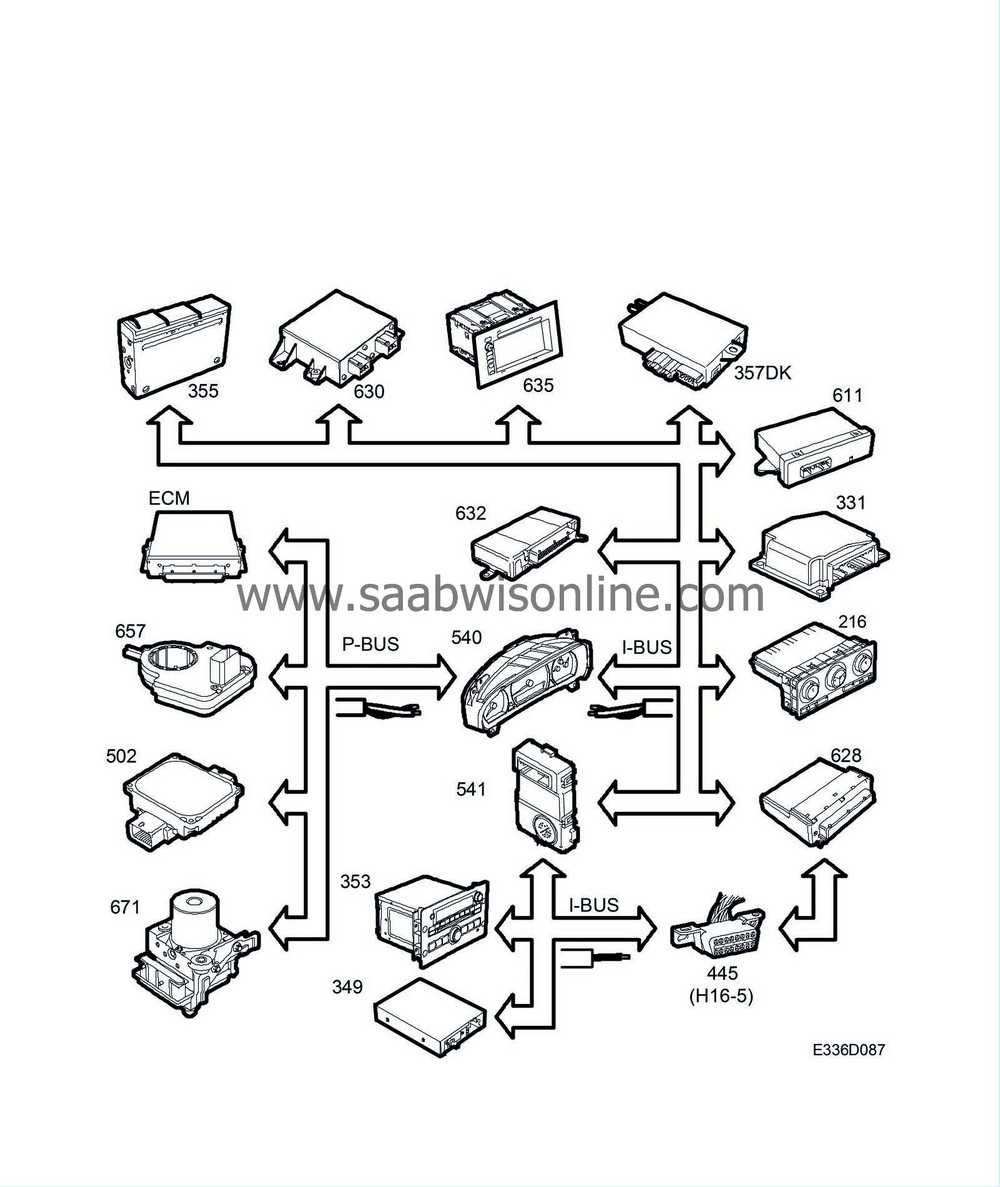PRE-RELEASE
P-bus and I-bus
| P-bus and I-bus |

A bus is understood to be the leads over which information is sent digitally and serially. Digital means that the voltage difference between the leads has only two values, roughly 0 V and 5 V. The information is coded so that different combinations of pulses between 0 V and 5 V have different meanings.
Serial means that the information is sent in ”packets” which are transmitted one after the other in rapid succession.
All control modules in the Saab 9-5 have a bus connection except for the DAH, AHL, VCIM and OIM.
The bus consists of a P-Bus (Powertrain Bus) and a (1 lead and 2 lead) I-bus (Instrument bus).
The P-bus and the 2-lead I-bus are connected to the main instrument unit (MIU). Both the 1-lead and the 2-lead I-busses are connected to the SID control module. The two different busses are electrically separated in both the SID and MIU control modules.
The diagnostic tool does not have a direct bus connection with either the P-bus or the 2-lead I-bus but communicates with the connected control modules via DICE. The diagnostic tool communicates directly on the 1-lead I-bus with the connected control modules EHU and SDAR.
The data transfer rate of the P-bus is between ten and fifteen times faster than that of the I-bus. The reason for this is that the powertrain systems need information with the least possible delay, as for example when providing air mass compensation when the selector lever is moved from N to D or torque limitation in connection with gear changing.
All information that is transmitted by a control module is available to all other control modules that are connected to the bus. The MIU and SID control modules are responsible for ensuring that information that is available to control modules on one of the busses is also available to the other control modules having a bus connection. The MIU is connected to both the P-bus and the 2-lead I-bus. The MIU acts as a "gateway" between the P-bus and the I-bus. The SID control module is connected to both the 2-lead and the 1-lead I-bus. The SID control module acts as a gateway between the 2-lead and the 1 lead i-bus.
Vehicle speed is an important parameter for many control modules. The MIU receives vehicle speed information from the ESP control module via the P-bus. The MIU transmits speed information on the 2-lead I-bus and the SID control module ensures that the EHU has access to the information on the 1-lead I-bus.
The control modules send out information on the bus at regular intervals. The time between two transmissions depends on the information being sent and varies between 10 milliseconds (0.010 seconds) and 1 second. Information is also sent out by the control modules whenever the information changes.
The transfer of information between the control modules takes place on one lead for the 1-wire I-bus or on two leads for the P-bus and the 2-wire I-bus. On the bus with two leads both are twisted to reduce sensitivity to electrical interference.



